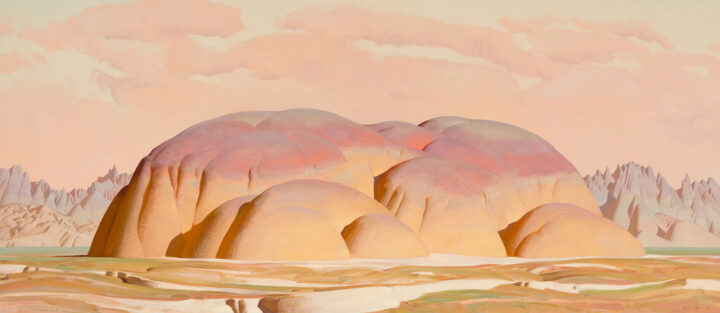Raised in a small town called American Fork, Utah, Brett Allen Johnson remembers having an interest in art throughout his life, but didn’t immediately see the potential as a professional fine artist. After high school, at 18 years old, he married his high school sweetheart and took a job as a carpenter. The position, where he would remain for 16 years, helped establish a meticulous work ethic and laid the groundwork for what would become the foundation of his art career: the ability to visualize an idea and then bring that to conception and beyond. In 2003, while working as a carpenter, Johnson attended Utah Valley State College, where he started to explore graphic design. After three years, he realized he wanted to be a different kind of artist and left school to pursue art in his own way.
Over the course of the next decade, he would hone his craft, and his voice as an artist, through his experiences painting the Southwest, like his grandmother before him. Once in the studio, Johnson’s paintings skewed toward expressionism, modernism and abstraction. He started filtering his subjects through this unique lens — hard edges, complex forms and vivid colors — and coming away with astonishing results.
Painting by painting, Johnson developed his work into a profound and unified vision of the West. A vision that brought the iconography of the land and the people together as monuments to the West. In 2016, Johnson started posting his work online, and within a year he had generated important and loyal fans at Maxwell Alexander Gallery in Los Angeles. It wasn’t long before he was showing with some of the biggest names in contemporary Western art, and then taking center stage in his own solo shows. While his incubation took close to 16 years, Johnson, still in his 30s, has ascended quickly through the ranks of Western art to become one of the must-watch rising stars.
Today, Johnson lives in Lehi, Utah, with his wife, Tosha, and his four children.






